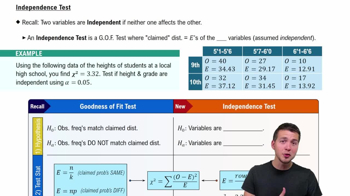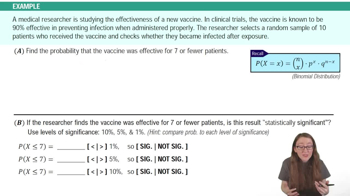Here are the essential concepts you must grasp in order to answer the question correctly.
Sign Test
The sign test is a nonparametric statistical method used to evaluate the median of a single sample or the differences between paired samples. It focuses on the direction of changes (positive or negative) rather than their magnitude, making it suitable for ordinal data or when the assumptions of parametric tests are not met. In this context, it will help determine if there is a significant difference in weights of male freshmen from September to April.
Recommended video:
Significance Level
The significance level, often denoted as alpha (α), is the threshold for determining whether a statistical result is significant. In this case, a significance level of 0.05 indicates that there is a 5% risk of concluding that a difference exists when there is none (Type I error). This level is commonly used in hypothesis testing to assess the strength of evidence against the null hypothesis.
Recommended video:
Finding Binomial Probabilities Using TI-84 Example 1
Null Hypothesis
The null hypothesis (H0) is a statement that there is no effect or no difference, serving as a starting point for statistical testing. In this scenario, the null hypothesis posits that there is no significant difference in the weights of male freshmen between September and April. Testing this hypothesis allows researchers to determine if the observed data provides enough evidence to reject it in favor of an alternative hypothesis.
Recommended video:







